Whale Album: Giants of the Deep
Maori man

This illustration shows a richly dressed Māori man wearing a rei puta (rei meaning “whale ivory” and puta meaning “hole”). From plate 13 in An Account of the Voyages … in the Southern Hemisphere by John Hawkesworth, Volume 3, London, 1773.
Heru (ornamental comb) 1800-1900
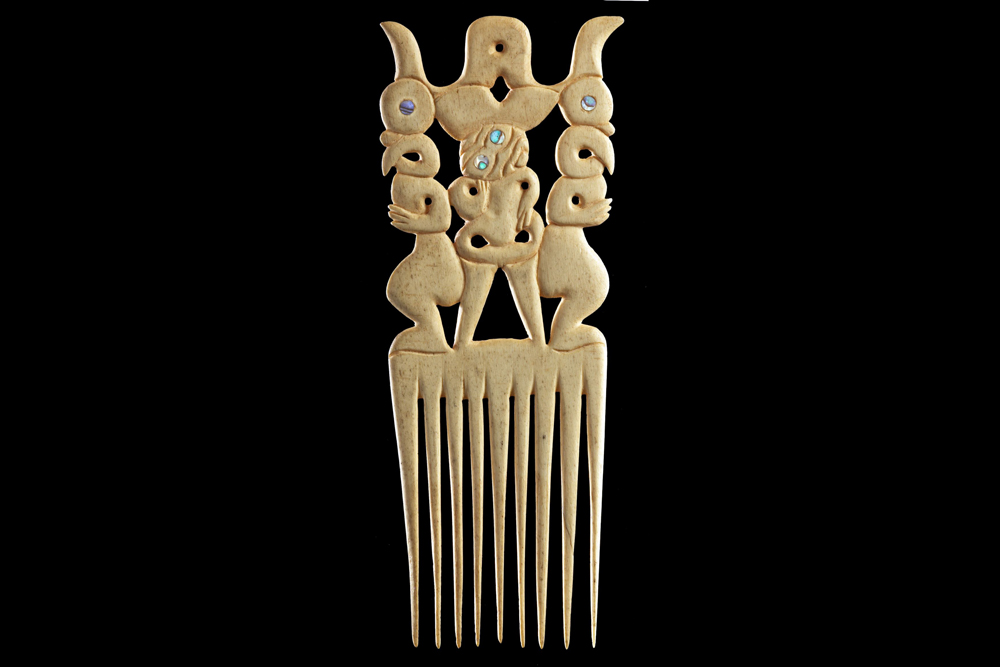
For Maori, the head is tapu (sacred). Heru (ornamental combs) became sacred, too, particularly those belonging to rangatira (leaders), because of their association with the head to adorn the top-knot. Heru were usually made of wood, but whale bone ones were especially prized, because whales are revered by the Maori. Many legends describe hero ancestors who arrived on New Zealand shores by riding on the back of a whale.
Koropepe pendant, 1800-1900

This pendant, made from whale bone and red wax, is in the form of a Koropepe, a creature with the head of a bird and the body of an eel. Maori and several other cultures attach great value to pendants like this one. They are rare and are a mark of the wearer’s prestige. South Pacific artists today continue the centuries-old practice of using whale bone and teeth in their work. Carvers admire the bone for its fine, wood-like grain.
Aurei (cloak pin), 1800-1900

The rattling of aurei (cloak pins) might signal the approach of a Māori rangatira (leader). Only a person of significance could make such an ostentatious display of wealth. Aurei are objects of mana (prestige and authority). They also take on the mana of all who own them. This pin, which was purchased in 1914, was made of whale ivory, probably from a sperm whale tooth.
Wahaika (short-handled weapon)
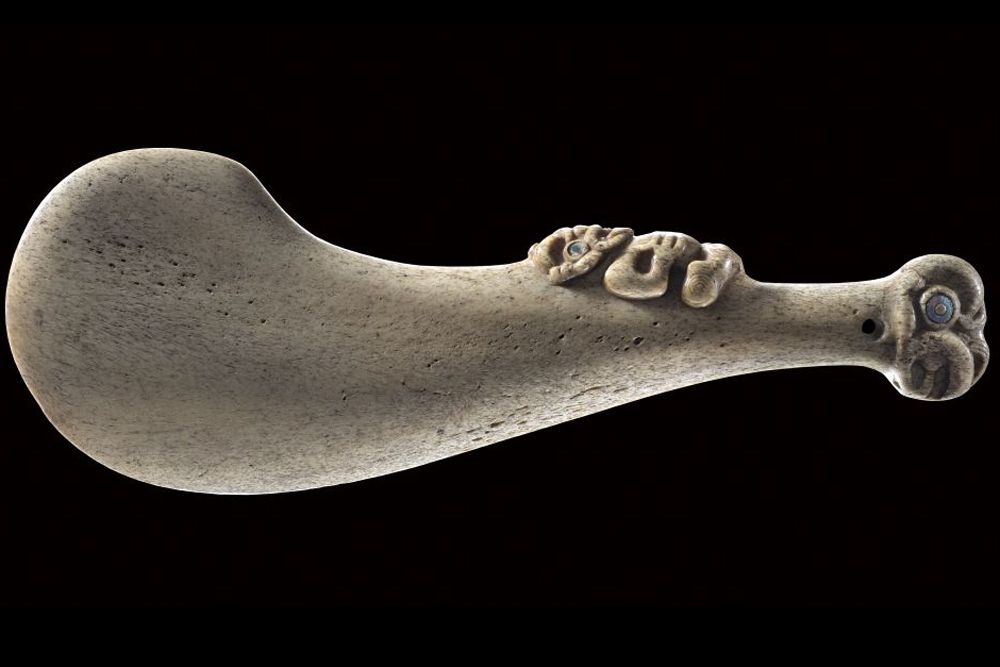
Used for close combat, the wahaika (short-handled weapon) has a curved shape and usually a human figure carved into the crescent of the blade. This fine example was collected in 1777 by the famous English explorer Captain James Cook. It is made of whale bone and paua shell.
Orca whale fluke (Orcinus orca)
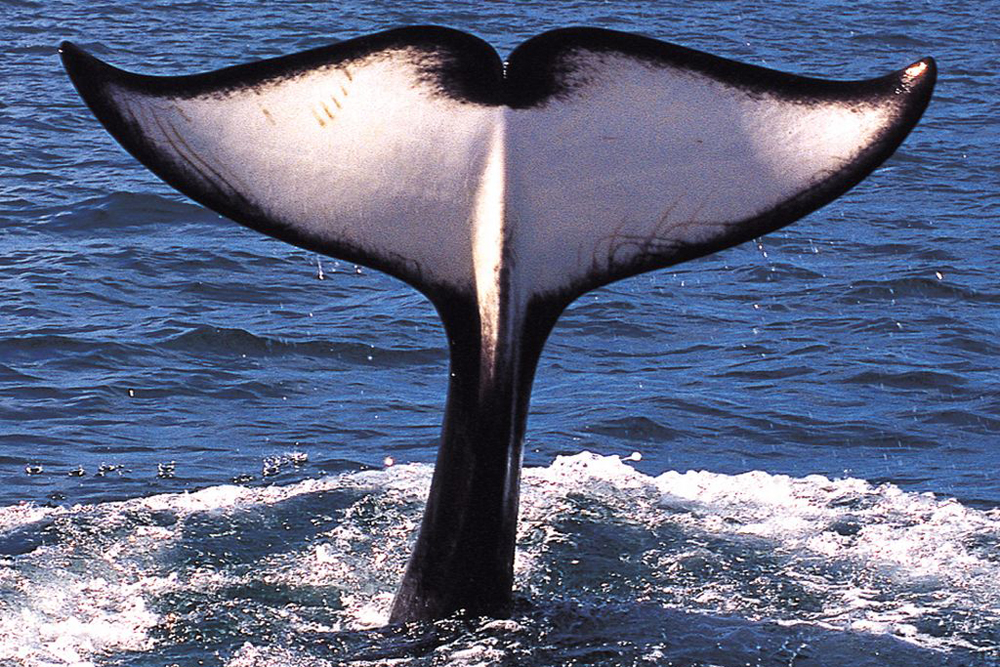
Used for close combat, the wahaika (short-handled weapon) has a curved shape and usually a human figure carved into the crescent of the blade. This fine example was collected in 1777 by the famous English explorer Captain James Cook. It is made of whale bone and paua shell.
Stranded whale
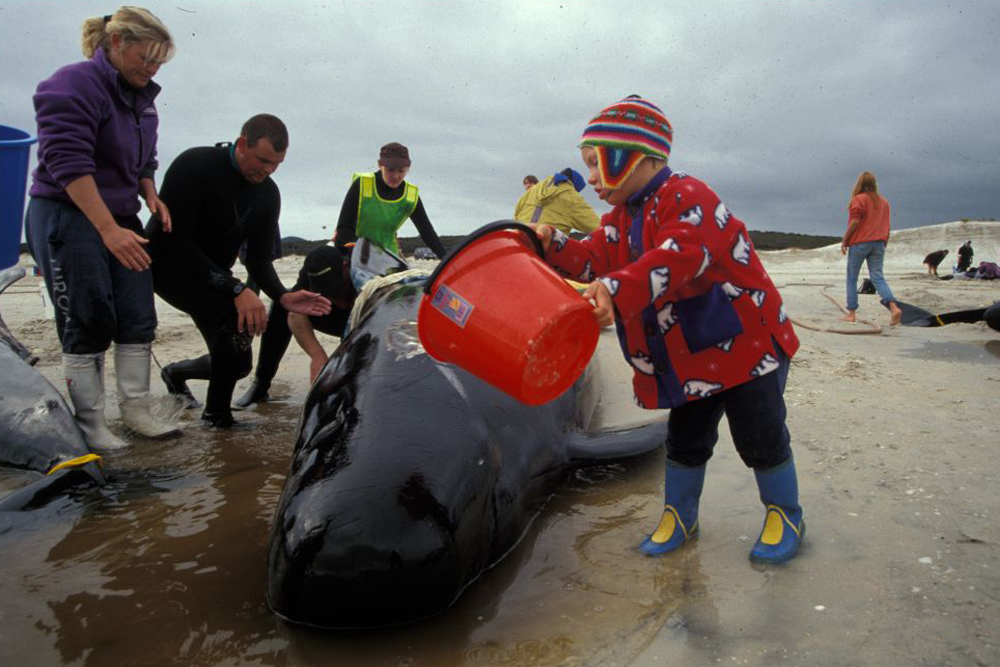
Whales strand for various reasons. Disease and old age can play a part, as can extreme weather and the make-up of coastlines. Human-made pollution, mishaps with ships, and fishing gear also can result in strandings. This photo, taken in 1997 in Karikari Beach, New Zealand, shows a stranded long-finned pilot whale.
Get the world’s most fascinating discoveries delivered straight to your inbox.
Hector’s dolphin in fishing net
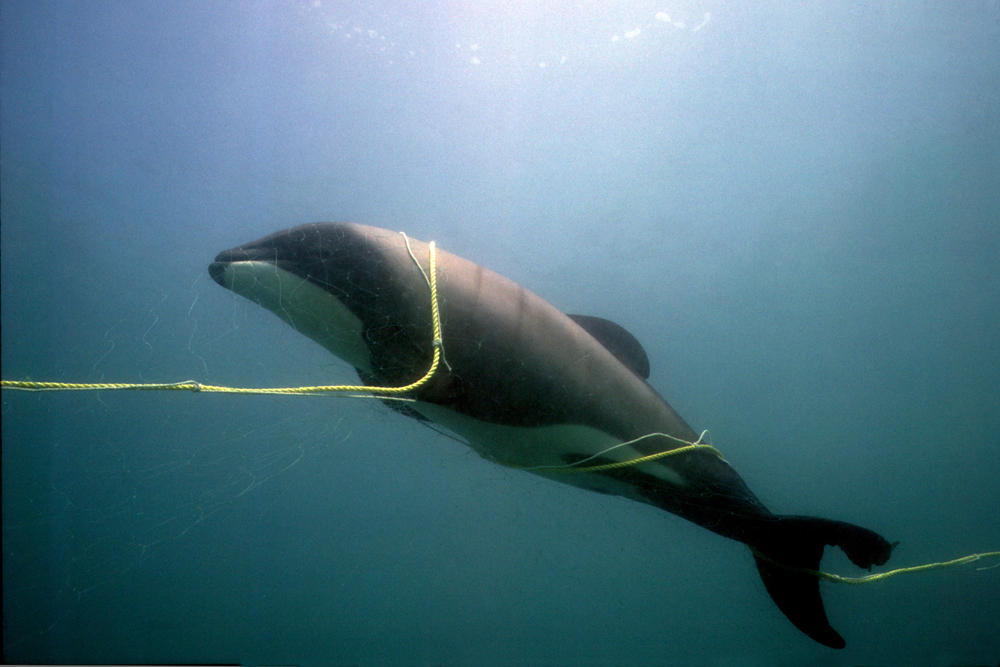
This photo is of a Hector’s dolphin (Caphalorhynchus hectori) calf caught in a fishing net in Akaroa, New Zealand. At 5 feet long, Hector’s dolphins belong to one of the world’s smallest dolphin species. There are two distinct populations of this species: Hector’s dolphin and Maui’s dolphin, whose distribution is restricted to the west coast of the North Island of New Zealand. Both are unique to New Zealand and can be identified by their rounded dorsal fin. Hector’s dolphin is also one of the world’s rarest marine dolphin species, and the Maui’s dolphin is recently recognized as a critically endangered sub-species. Respectively, only about 7,000 and 110 of these dolphins remain today.
Humpback whale (Megaptera novaeangliae)

The first word of the humpback whale’s scientific name, Megaptera, means “big wing.” Humpback whales have the longest flippers in the whale world — or the longest arms on the planet. Their flippers can grow to 19 feet long.
Dolphin skull scrimshaw
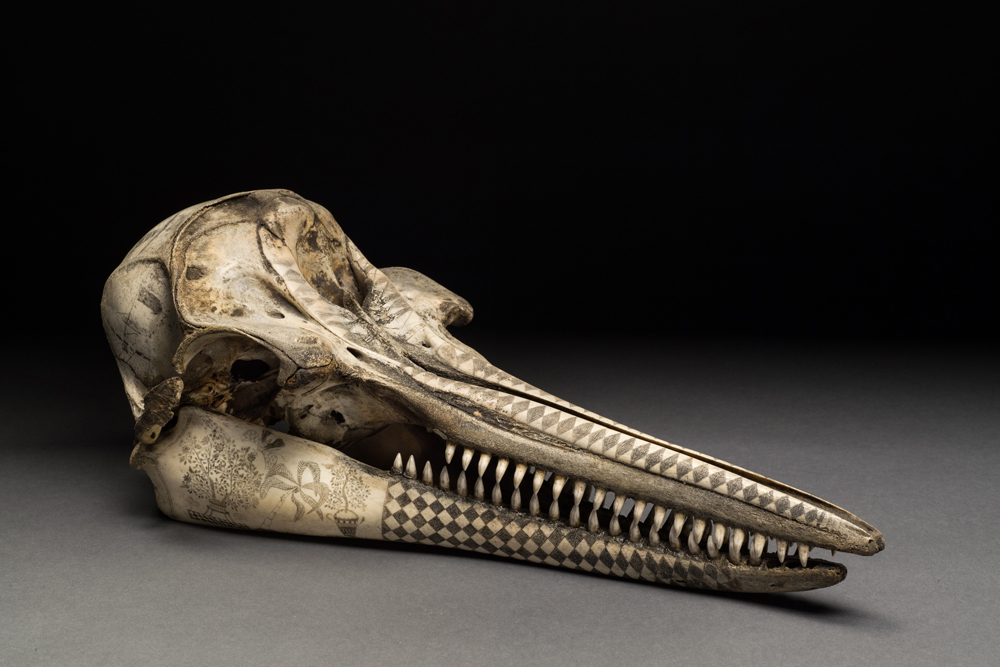
On long whaling voyages, many sailors whiled away the hours with handicrafts such as scrimshaw — engraving pictures into pieces of bone or teeth from sea mammals, including whales. In this distinctive scrimshaw piece, the skull of a rough-toothed dolphin (Steno bredanensis) has been decorated with flags, ships, a butterfly and flowering trees. 1750-1850.



